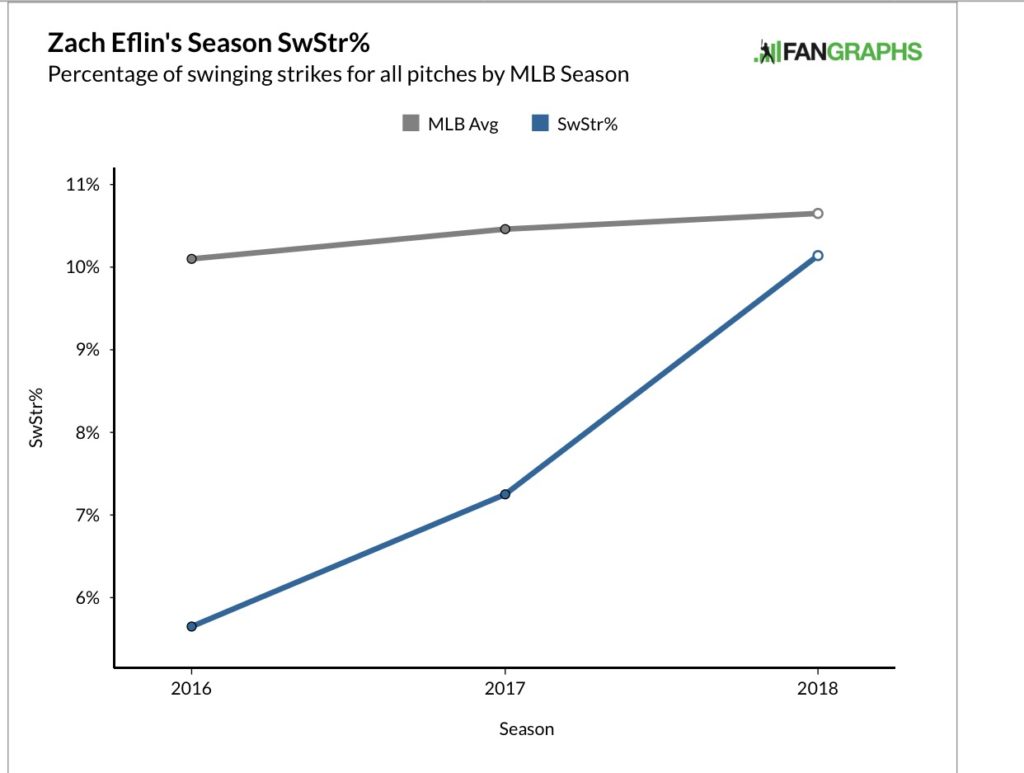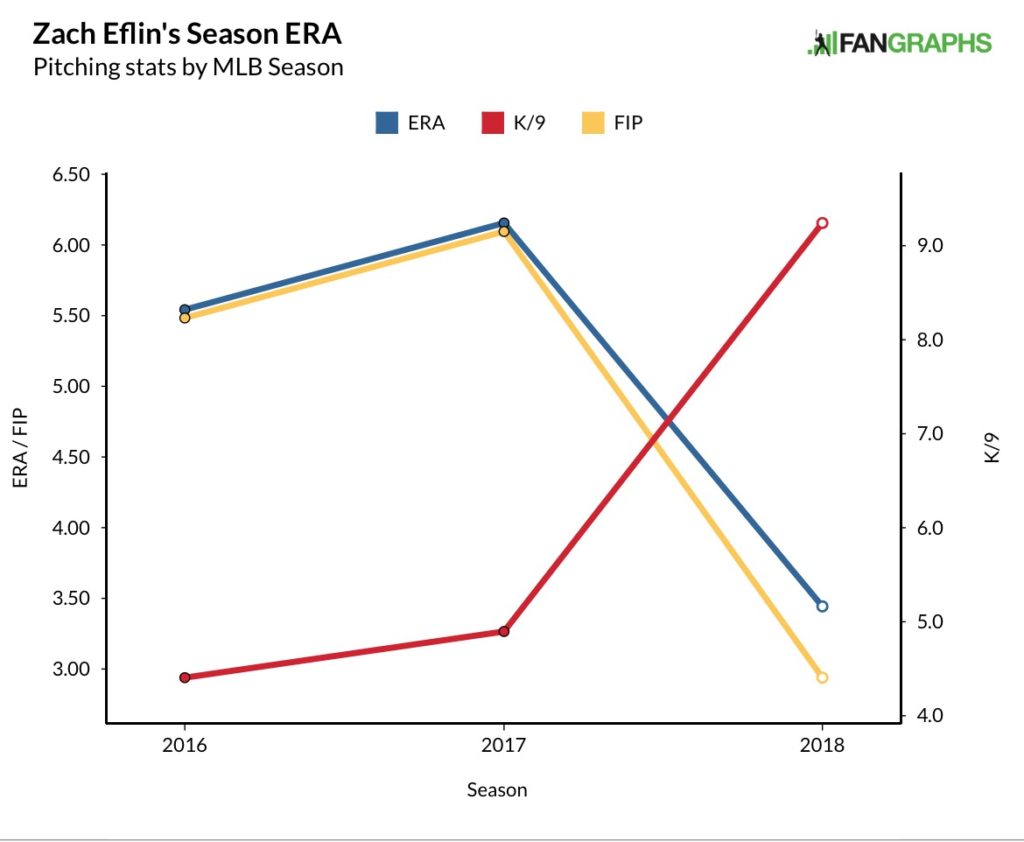Ad Disclosure
Zach Eflin Looks to Put Final Touches on a Brilliant June
By Bob Wankel
Published:

The Phillies will turn to Zach Eflin tonight in an attempt to salvage the final game of what has been a humbling series against the New York Yankees. They will hope that Eflin, who has spent much of June surprisingly playing the role of stopper, can add one more big-time start to what has been the 24-year-old right-hander’s finest month as a Major League pitcher.
His June began with a much needed 7.2 innings of one-run baseball against the Cubs that helped the Phillies wash away the bitter taste of a disastrous three-game sweep in San Francisco. He followed that key outing with a six-inning performance against the Brewers in which he allowed only two earned runs while striking out nine to help snap a four-game losing streak. His third start produced five innings of one-run baseball which helped the Phillies bounce back from a hideous 13-2 loss in the opening game at Milwaukee. Most recently, his latest start helped set the tone in the opener of an important series win in Washington.
Eflin’s June performance has been crucial to the Phillies’ ability to survive what has been a relentlessly difficult stretch of games against elite opponents, particularly given Jake Arrieta’s underwhelming 0-4 record and 6.66 ERA this month.
Just how good has Eflin been? He’s 4-0 in four starts, and his 2.28 ERA, 2.00 FIP, and 1.014 WHIP lead all Phillies starters this month.
Want more? I’ve got more. Have some.
He’s held opponents to a .227 batting average, .280 on-base percentage, .262 wOBA, and .594 OPS, all of which are best among Phils starters this month. Several of those numbers are among baseball’s best in June. Eflin’s June FIP ranks fifth among all starting pitchers that have logged at least 20 innings since the start of the month.
So what exactly has happened that has made him so much better than his mediocre month of May in which he posted a 4.50 ERA and 1.31 WHIP? Well, a few things. According to FanGraphs, his hard contact rate dropped from a 34.2% in May to 21.2% this month and his groundball rate has climbed from 28.8% to 43.1%. That’s typically going to yield favorable results for a guy who is known as a groundball pitcher. But there’s another factor at play here, which is perhaps the biggest reason for optimism regarding the sustainability of his improved performance. He is missing more bats.
Check out this chart which shows a dramatic linear improvement in his swinging strike percentage since his 2016 rookie season:
This graph demonstrates a direct correlation between his significantly declining ERA and FIP and his improving K/9 rate:
In fact, Eflin’s 9.24 K/9 this season is almost twice as high as his previous career best of 4.9 K/9 a year ago. The most obvious explanation for this radical improvement is that he’s finally healthy after battling shoulder, elbow, and knee injuries over the past few seasons. In terms of velocity, his average four-seam fastball sits at 95.1 mph, up from 93.7 mph last season. He’s throwing it almost twice as much as he did a season ago, and he’s relying on his sinker less.
It’s a rush to judgment to suggest that Eflin is in the process of turning himself into a legitimate middle of the rotation arm, but it’s not a preposterous idea at this point. Maybe he goes out tonight and gets pounded into submission by a daunting Yankees lineup and we cool the jets, but his progress is worth noting and keeping an eye on moving forward, particularly as the July 31 deadline nears. The Phillies could consider adding a veteran arm or a left-handed starter to help balance out their rotation. A few weeks ago, it seemed clear that Eflin would be the odd man out in that scenario. Now? Matt Klentak has something to think about.
Bob Wankel covers the Phillies for Crossing Broad. He is also the Vice President of Sports Betting Content at SportRadar. On Twitter: @Bob_Wankel E-mail: b.wankel@sportradar.com

